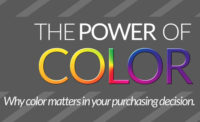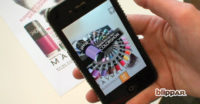How Trends Can Fuel Package Design
How Trends Can Fuel Package Design
by Gail Ritacco
Our changing times are defined by trends, which amplifies the challenge for marketers to capture the essence of a trend as it emerges. Timing is everything. And while some brand marketers understand they can connect with consumers functionally, aesthetically and emotionally when their products are grounded in a trend, many overlook trends when it comes to package design, often resorting to stock solutions. One reason may be that they and their design teams don’t really understand how to translate a trend into an actionable packaging solution. So, here’s a review:
Match the trend to your brand and target
Forward-thinking designers are beginning to realize the importance of connecting with trend strategists to understand the needs, desires, values and passions that motivate people to make decisions, and to grasp how a trend can relate to a particular product or target. But marketers should be specific about who and what they apply trends to, as not all trends are relevant to all lifestyle segments, demographic groups or to all brands or product categories. This level of understanding is the foundation of connecting with the consumer viscerally, and can offer a window into the consumer’s psyche and emotions.
Take inspiration from other products or categories
Because they operate on ever-shortening product lifecycles, the fashion and beauty industries (and others like them) manifest trends long before consumer packaged goods brands ever do. You’ll find that it is often beneficial to examine how a trend you’ve identified as important is affecting other products, categories and industries, and how those manifestations can inform your brand.
Invite consumers “living the trend” to your ideas
Once you identify a trend and designate it relevant to your brand, you’ll need to ensure that your resulting package designs are, in fact, speaking the language of consumers who are already living the trend. Guide consumers through visual language exercises, functional hands-on evaluations and shelf and use connections to guide your designs.
Yes, these are simple steps, but they are too often overlooked. And look at how beautifully they can be applied. The makers of Arm & Hammer, for instance, understood that consumers are increasingly looking to take charge of their lives and have more control over their environment. Their solution was a functional one: the Fridge Fresh package, with a replacement indicator bar that tells the user when the baking soda is past its prime and a flow-through-designed air filter that provides added confidence of freshness because it exposes the interior of the fridge to twice as much baking soda as the conventional one pound box.
Trends can also be applied via package aesthetics. Consider one that Iconoculture, a trend strategy firm, has labeled “Get Real”, which describes consumers’ growing demand for authentic experiences and possessions in a world that is more and more mass marketed everyday. Armed with this insight, a designer would consider unadulterated package solutions, which might manifest in their choice of materials, the uniqueness of their design or the hand-crafted look and feel of the end product. Bear Naked granola packaging is a good example: simple structure, simple graphics and consumers can see what is inside.
Another brand that has connected with this same consumer segment is Mountain Valley Spring Water. The company created a bottle that reinforces the brand’s authenticity and heritage. The bottle’s green tint evokes nature and reminds consumers of the natural origins of the water, while an embossing of the phrase “Since 1871” reminds consumers of the brand’s history.
Of course sustainability is another big shift, and brands are beginning to realize that environmentally friendly solutions are slowly becoming the cost of entry. This trend has implications in the choice of materials, features and the move towards minimal or refillable packaging. Take Aveda’s new Nourish-Mint lip color, which is housed in a refillable, 96 percent post-consumer-recycled resin lip case designed to minimize packaging waste by encouraging reuse.
So take these brands as inspiration. Can your packaging embrace a current consumer trend? Yes. Could it result in stronger emotional consumer connections for your brand? Absolutely. Just remember that inspirational design can only be fueled by analyzing current trends and the consumer values that drive them early in the development process. And then work to translate those trends into an actionable solution that can best ensure brand loyalty and longtime marketplace success.
Gail Ritacco is vice president of market insights at Product Ventures, a creative agency for structural packaging innovation. The former leader of market research at Dannon, Gail has more than 20 years of consumer insights experience. Contact Gail at gritacco@productventures.com.
Looking for a reprint of this article?
From high-res PDFs to custom plaques, order your copy today!







